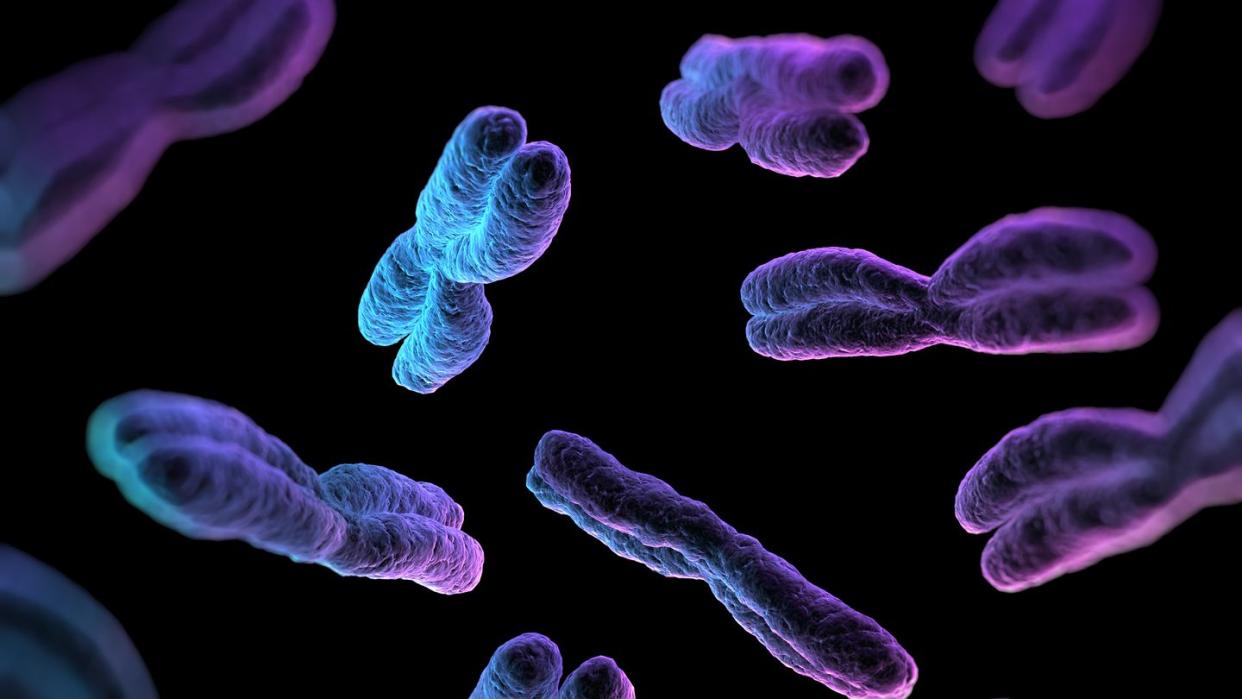Scientists Are Cracking Ancient Chromosomal Complications

"Hearst Magazines and Yahoo may earn commission or revenue on some items through these links."
Sex chromosome abnormalities, including missing or extra X and Y chromosomes, can be difficult to detect in ancient DNA as it slowly erodes over time or becomes contaminated.
Scientists have now developed a new computational method to detect these abnormalities, known as “aneuploidy,” in samples dating back to the Iron Age.
This new level of genetic insight can give us a clearer picture of Turner’s, Klinefelter, or Jacob’s syndrome while also provided an important genetic lens through which to view history.
In biological terms, being male typically means you have XY chromosomes, and being female typically means you have XX chromosomes. But it doesn’t always work out that way. Sometimes, a person can be born with too many or too few chromosomes, which is known as “aneuploidy” and can cause Turner (missing X), Klinefelter syndrome (XXY), and Jacob’s syndromes (XYY). And while we know these abnormalities are not a modern development, finding prehistoric evidence of these diseases has proven difficult, as DNA erodes over time and becomes contaminated by other ancient samples or by the people handling it.
To get around these problems, scientists from the University of Oxford, University of York, and Oxford Archaeology have developed a new method to count chromosomes in ancient genomes. This recently allowed them to identify the first prehistoric case of Turner’s syndrome, as well as the oldest-known person to have Jacob’s syndrome (from the early Medieval period). The result of their work was published Thursday in the journal Communications Biology.
“It’s hard to see a full picture of how these individuals lived and interacted with their society, as they weren’t found with possessions or in unusual graves,” PhD student and study co-author Kakia Anastasiadou said in a press release, “but it can allow some insight into how perceptions of gender identity have evolved over time.”
To count these chromosomes, experts analyzed a large data set—part of the Thousand Ancient British Genomes project—and used a new computational method to identify certain aneuploidies, along with instances of contamination. As a result, the team found individuals from as far back as the Iron Age (roughly 2,5000 years ago) to the post-Medieval period just 250 years ago.
Additionally, these extraneous or missing sex chromosomes can interfere with a human’s natural sexual progression. For example, the bones of the person with Turner’s syndrome indicated puberty and menstruation had not yet begun, even though the age of the remains was between 18 to 22 years old.
“Ancient DNA can contribute to our understanding of chromosomal sex in the past, its relationship with gender, and allow for the identification of non-binary chromosomal sex via investigation of the number of sex chromosomes detected in an individual’s karyotype (set of chromosomes),” the paper reads. “Deploying genomic data for sex identification can surpass limitations in the sex estimation methods that rely on osteological features.”
The researchers hope that an “ever-increasing number of ancient genomes” will help us understand the genomic diversity of the past and present and offer a new, genetic lens through which to view our history.
You Might Also Like

